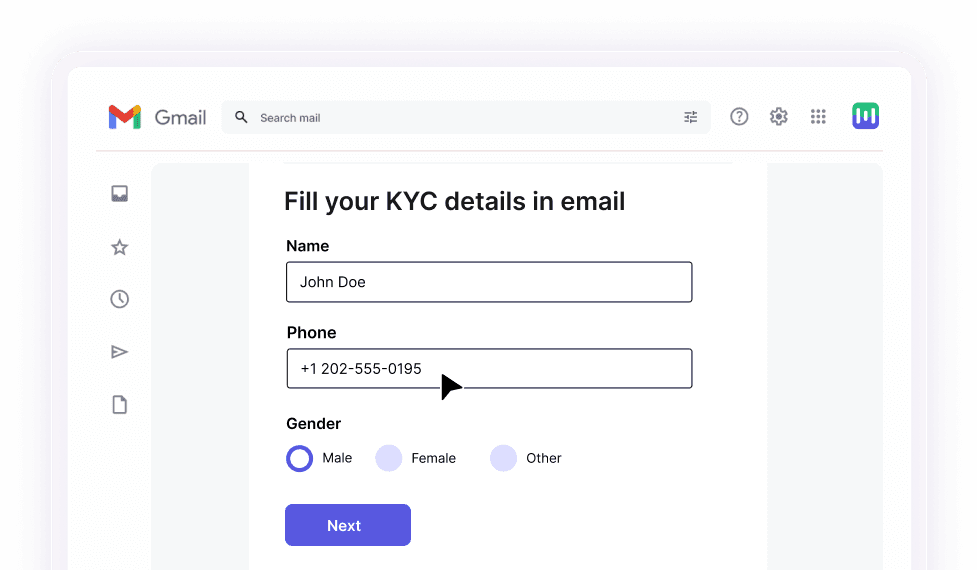AMP for email has emerged as a tool to raise the bar of user experience by bringing fun and interactive elements into play. With AMP, you can provide your email subscribers with a dynamic experience inside their mailboxes.
Including such elements becomes possible due to the support of specific AMP-enabled components.
This guide will introduce you to the AMP components that support AMP for Email. Let's look at the components of AMP for email.
What are the components of AMP for email?
Media components of AMP for email
Dynamic components of AMP for email
Layout components of AMP for email
Conclusion
What are the components of AMP for email?
The AMP email format provides a category of AMP HTML components that allows you to add advanced app-like functionality within an email. This allows the recipients to interact dynamically with the content of the email.
The component of AMP emails consists of three categories:
- Media components
- Dynamic components
- Layout components
Let's discuss each of these in detail:
Media components of AMP for email
AMP's media components contain attributes that allow you to add images and gifs to AMP emails.
1. Amp-img
Amp-img tag replaces the tag of basic HTML. However, you also need to add "width" and "height" in the map tag. This helps in calculating the layout as per every email. Your code will look like this:
<amp-img src="img.jpg" width="350" height="200">
Moving on, you can also make your images responsive by adding a simple attribute called "responsive." This attribute controls the layout. Your code will look like this -
<layout="responsive" alt="My Image"\>
Also, you can use an attribute called the srcset attribute, which helps in specifying images to different viewports and pixel densities. This attribute behaves the same way as it does with non-AMP images.
2. Amp-anim
The Amp-anim attribute helps in embedding GIFs to your AMP emails. However, it lets the AMP runtime reduce CPU usage while the animation is not on-screen.
There is also a possibility of adding playback functionalities in the future.
Create and send AMP emails without coding in minutes

Dynamic components of AMP for email
Dynamic components of AMP contain attributes that help add dynamic elements and interactivity to your email.
3. Amp-form
With Amp-form attribute, you can use the forms and the input fields in an AMP document. The amp-form helps form submission of HTTP and XHR(XMLHTTPRequest). You can also render success and error responses with submit-success and submit-error attributes.
4. Amp-selector
With this, you can control the list of options and help the users choose an option. Also, the contents can go beyond the text. For example, you can include it as a list in your AMP emails.
Read in detail: How to Use Amp-selector in Your AMP Emails
5. Amp-bind
With amp-bind, you can add the elements of interactivity with the help of data binding and JS-like expression.
6. Amp-image-lightbox
The amp-image-lightbox allow you to show AMP images in a lightbox effect. This effect will make an image come at the screen center when users click on it and puts a transparent dark shade on the background elements.
7. Amp-state
The amp-state is null at the beginning and helps in adding interactivity beyond the pre-built amp components.
8. Amp-mustache
The amp-mustache allows you to add dynamic content to the AMP emails. To add dynamic content, you’ve to use mustache templates that reference and replace the information stored in the back end. This opens up the opportunity to create personalized emails and hence, increase your conversion rates.
9. Amp-list
The amp-list helps in fetching dynamic elements from the endpoint of CORS JSON. The endpoint contains data, sending a response back to a specified template.
Layout components of AMP for email
The layout components of AMP contain attributes that allow you to enhance the layout of your AMP email.
10. Amp-accordion
An accordion helps the viewers glance at the content's outline. After this, they can directly jump to a section of their choice. The outline of the content is expandable and collapsible. This tag contains many sections. Each has two direct children. The first child is the section heading, and the second is the expandable/collapsible content. You can click and tap to expand or collapse a section.
Read in detail: How to Use amp-accordion in Your AMP Emails
11. Amp-carousel
The amp-carousel helps in displaying the images in a very appealing manner. The images can be of different sizes, and thus, you need to mention the height attribute in advance. Every amp-carousel component's immediate children are an item in the carousel. Every node also has an arbitrary HTML child. The carousel contains items and navigational arrows.
12. Amp-fit-text
This attribute helps adjust the fit and the size of a text within a particular area. For example, when content is present in an amp-fit-text element, it finds a particular font size to fit in a specified space.
Read in detail How to Use Amp-fit-text in Your AMP Emails
13. Amp-layout
Amp-layout helps maintain the aspect ratio and makes the layout more responsive. This is similar to the existing AMP component but supports every HTML markup as children.
14. Amp-sidebar
The amp-sidebar component helps display meta content like navigation links, menus, buttons, etc. The sidebar reveals the outline while the main content remains hidden.
Get a sample AMP email in your inbox
Experience the power of interactivity right now
Conclusion
Implementing AMP emails in your email marketing strategy is suitable for your business as it results in improved customer experience and boosts sales. To build an efficient AMP email, you can use AMP email components or an email marketing software like Mailmodo, which adds interactive elements like images, forms, carousels, etc., without any coding.
So what are you waiting for? Build your first interactive AMP emails with Mailmodo! Read how BluSmart achieved 35% submissions on their quiz, which was 3.5 times the expected submission rate, with AMP emails.










